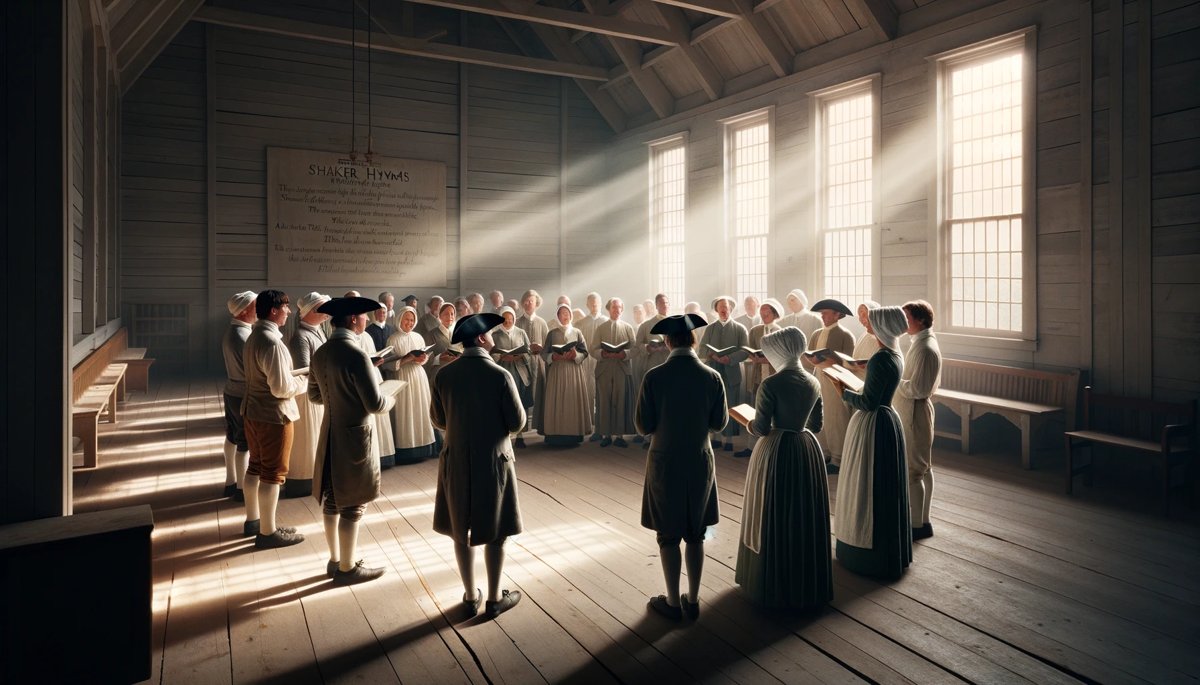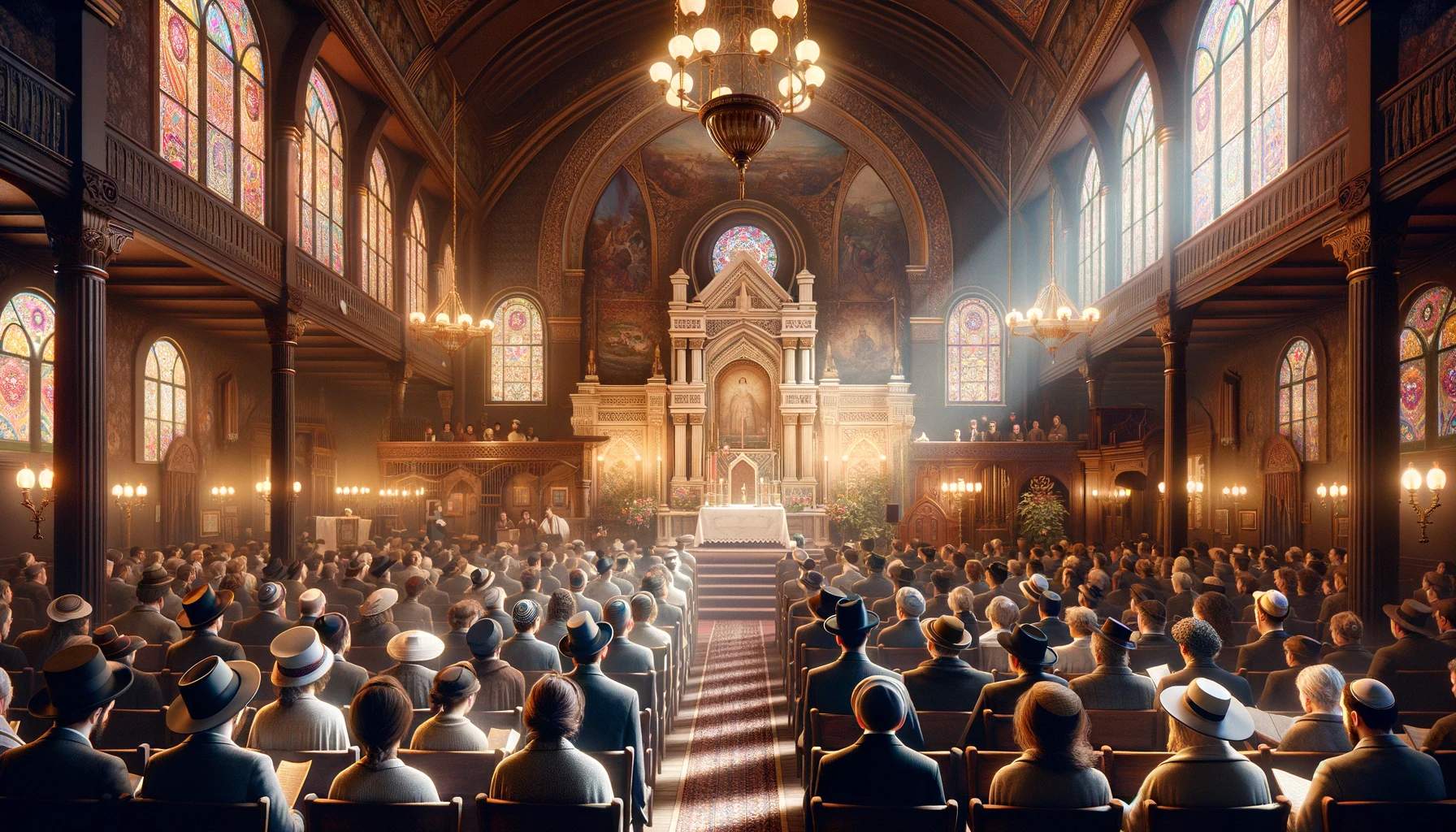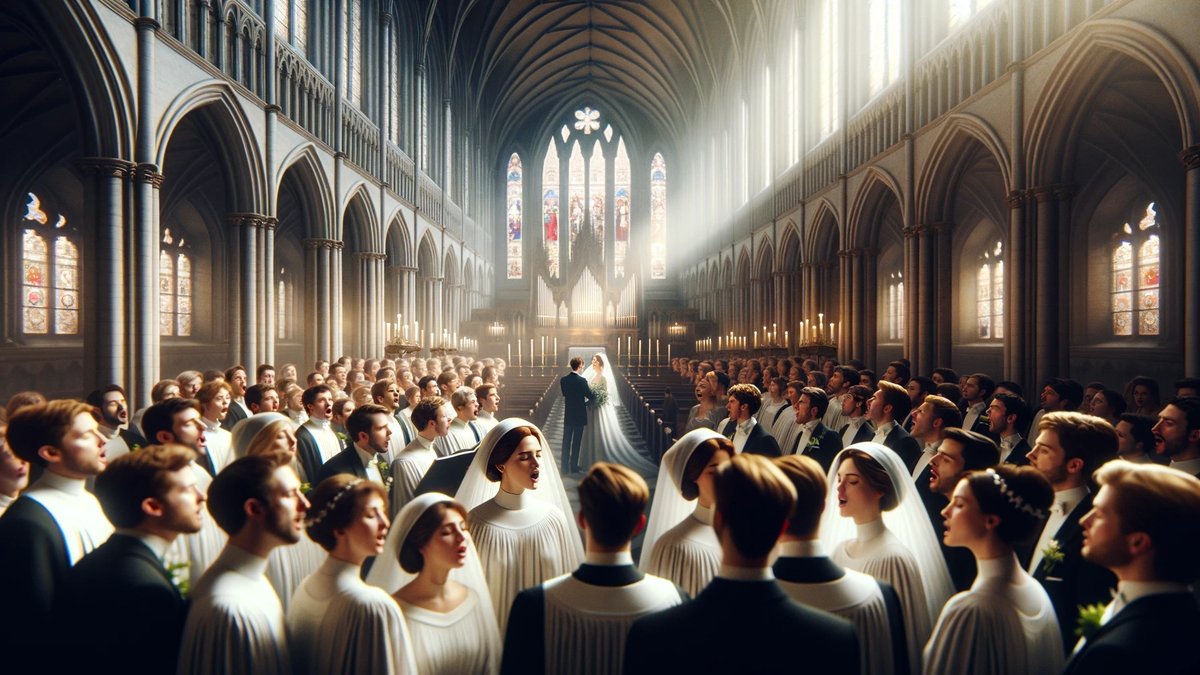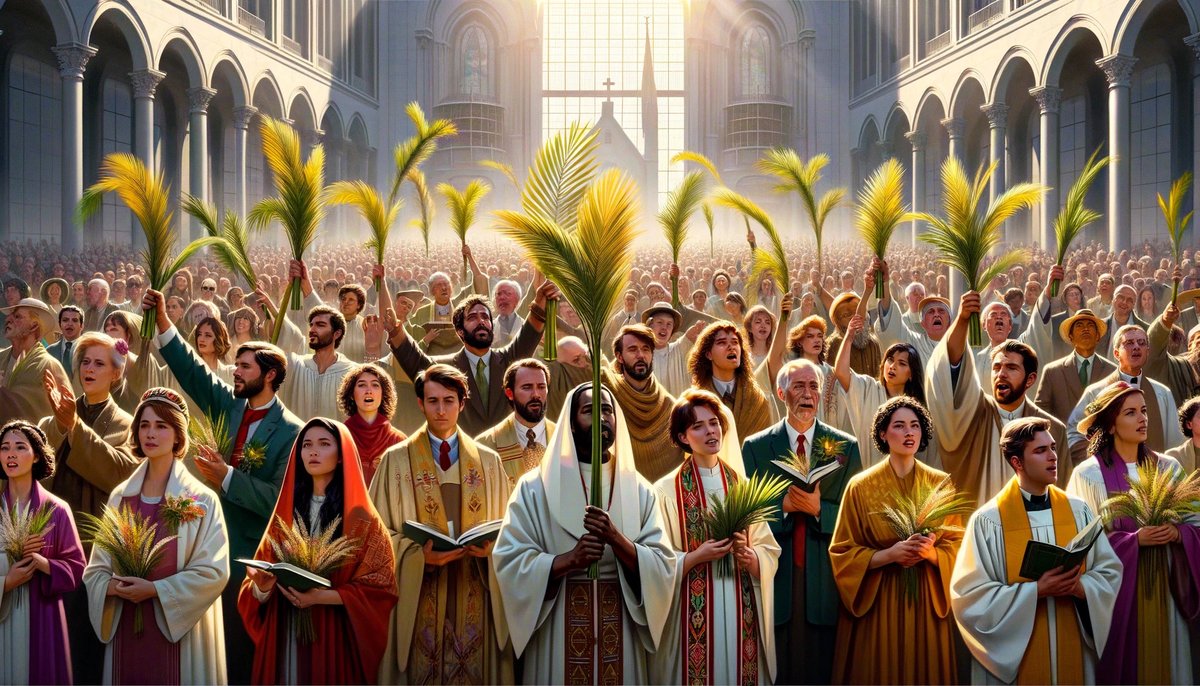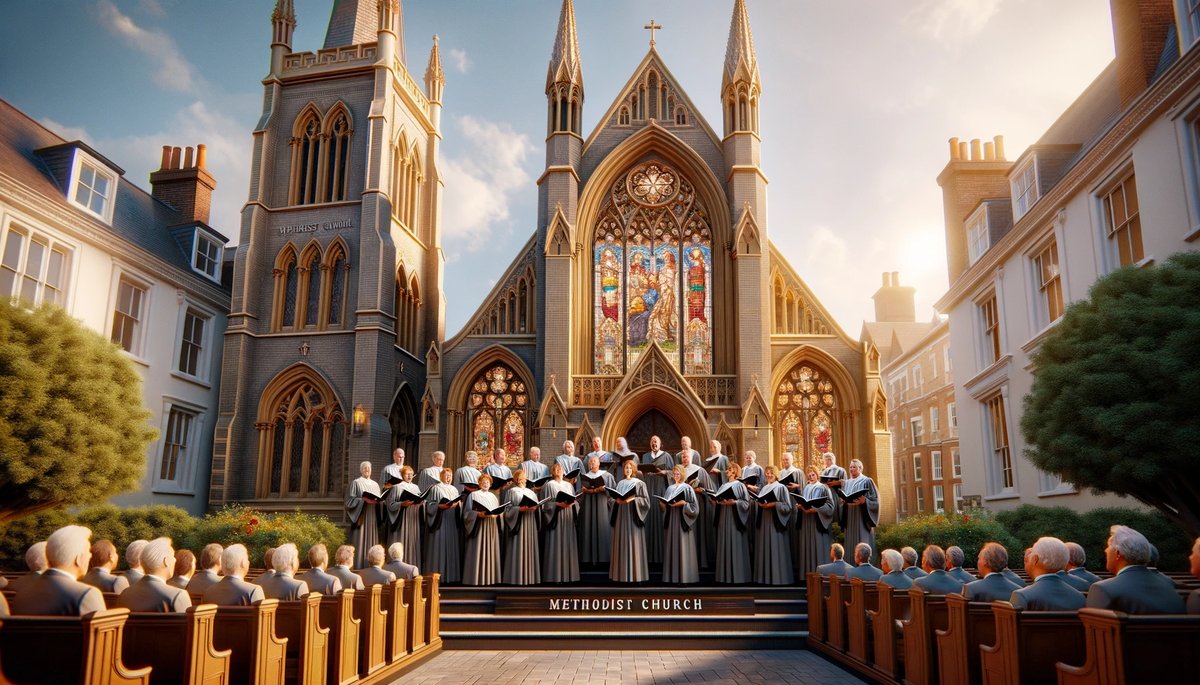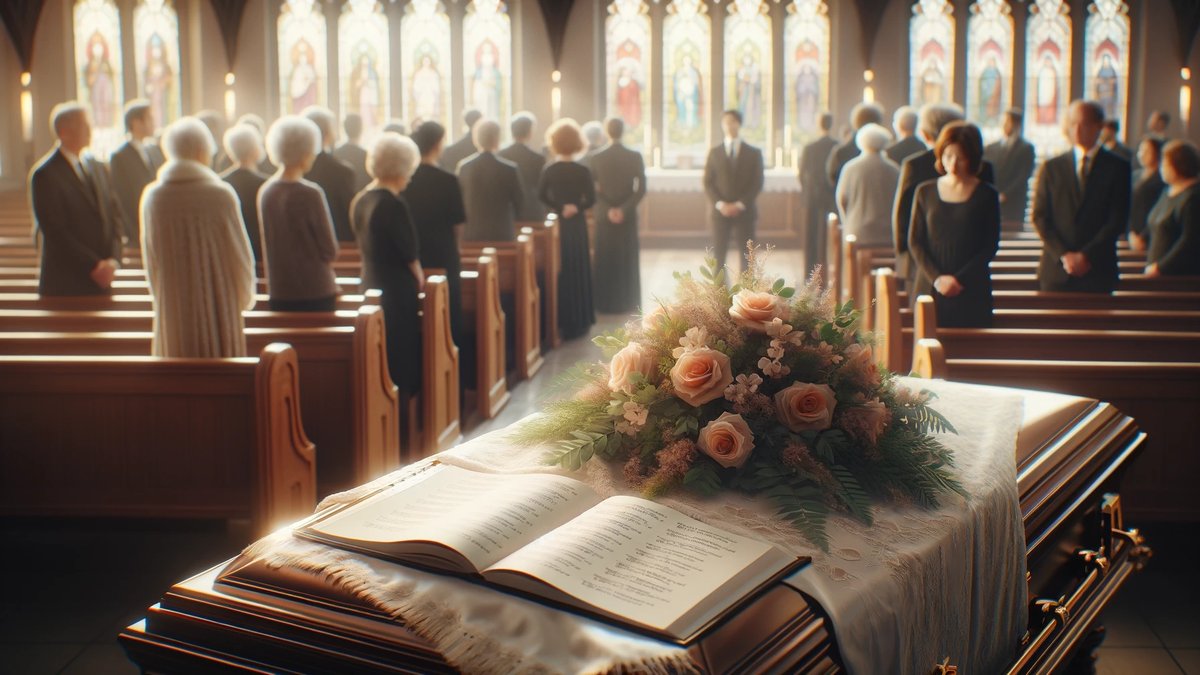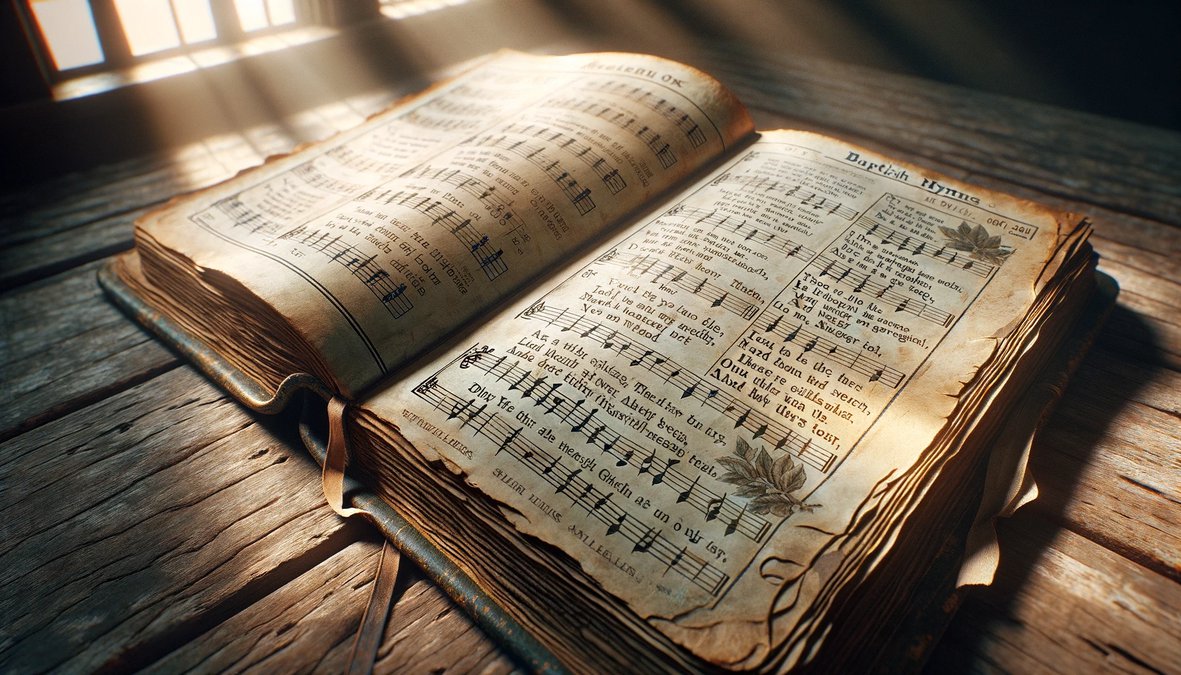Home>Arts and Culture>What Are Traditional Hymns?
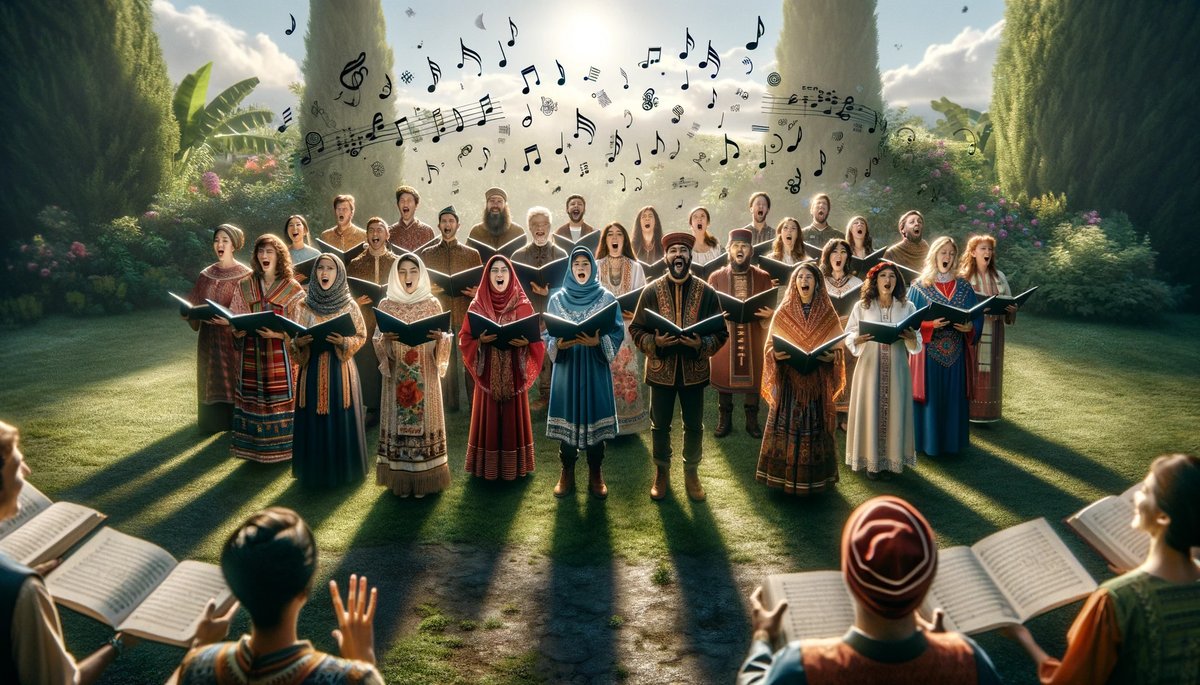

Arts and Culture
What Are Traditional Hymns?
Published: March 7, 2024
Ericka Andersen, an editor at Christian.net, expertly merges digital strategy with content creation, focusing on faith and societal issues. Her communication skills enhance the platform's engaging narratives, fostering meaningful dialogue on belief's impact on society.
Discover the rich history and significance of traditional hymns in the arts and culture. Explore the timeless beauty and spiritual depth of these cherished musical compositions.
(Many of the links in this article redirect to a specific reviewed product. Your purchase of these products through affiliate links helps to generate commission for Christian.net, at no extra cost. Learn more)
Table of Contents
The History of Traditional Hymns
Traditional hymns have a rich and fascinating history that dates back centuries. These hymns have been an integral part of religious worship, serving as a means of expressing faith and devotion through music. The roots of traditional hymns can be traced back to ancient religious practices, where believers would sing songs of praise and worship as part of their spiritual rituals. Over time, these early hymns evolved and were passed down through generations, eventually becoming an essential component of religious services in various cultures and traditions.
-
Early Origins: The history of traditional hymns can be traced back to ancient civilizations such as the Greeks, Hebrews, and early Christians. These early hymns were often simple chants or melodies that were sung during religious ceremonies and gatherings. They served as a way for believers to express their reverence and devotion to their deities.
-
Medieval Development: During the medieval period, traditional hymnody experienced significant development, particularly within the Christian church. Influential figures such as St. Ambrose and St. Augustine played pivotal roles in shaping the structure and content of hymns. The development of musical notation also contributed to the preservation and dissemination of traditional hymns across different regions.
-
Protestant Reformation: The Protestant Reformation in the 16th century brought about a renewed focus on congregational singing and the use of hymns in worship. Figures such as Martin Luther and John Calvin advocated for the inclusion of hymns in the vernacular language of the people, leading to the creation of numerous iconic traditional hymns that are still sung today.
-
Expansion and Global Influence: As European explorers and missionaries traveled to different parts of the world, traditional hymns were introduced to new cultures and integrated into indigenous musical traditions. This led to the development of diverse forms of traditional hymnody, each reflecting the unique musical and cultural expressions of the communities that embraced them.
-
Continued Legacy: Despite the evolution of musical styles and the introduction of contemporary worship music, traditional hymns continue to hold a significant place in religious worship. Their enduring legacy speaks to the timeless appeal and spiritual resonance of these cherished musical compositions.
The history of traditional hymns is a testament to the enduring power of music as a vehicle for spiritual expression and communal worship. These hymns have transcended time and cultural boundaries, leaving an indelible mark on the religious practices of countless believers around the world.
Read more: What Are Hymns
Characteristics of Traditional Hymns
-
Theological Depth: Traditional hymns are characterized by their rich theological content, often drawing from scripture and doctrinal teachings. They convey profound spiritual truths and serve as a means of imparting religious education and reflection within the context of worship.
-
Melodic Simplicity: Many traditional hymns feature simple and memorable melodies that are easily sung by congregations. This accessibility allows for widespread participation and creates a sense of unity as believers join their voices in collective praise.
-
Poetic Lyricism: The lyrics of traditional hymns are often crafted with poetic elegance, employing vivid imagery and metaphorical language to convey spiritual themes. This poetic quality enhances the emotional and artistic impact of the hymns, evoking a sense of reverence and awe.
-
Historical Significance: Traditional hymns often carry historical significance, reflecting the cultural and religious contexts in which they originated. They serve as a link to the past, preserving the traditions and beliefs of earlier generations while continuing to resonate with contemporary worshippers.
-
Musical Accompaniment: While traditional hymns can be sung a cappella, they are also commonly accompanied by organ music or other traditional instruments. The use of musical accompaniment adds depth and solemnity to the hymns, enhancing their emotive and spiritual impact.
-
Corporate Worship Emphasis: Traditional hymns are designed for congregational singing, emphasizing the communal aspect of worship. They are intended to be sung collectively, fostering a sense of unity and shared devotion among worshippers.
-
Timeless Appeal: Despite their historical origins, traditional hymns possess a timeless quality that transcends cultural and generational boundaries. Their enduring appeal lies in their ability to resonate with the human spirit, addressing universal themes of faith, redemption, and praise.
-
Integration of Liturgy: Traditional hymns are often integrated into liturgical practices, aligning with specific moments and themes within religious services. They complement the structure of worship and contribute to the overall spiritual experience of worshippers.
-
Emotional Resonance: Traditional hymns evoke a range of emotions, from joy and gratitude to penitence and supplication. Their emotive power allows worshippers to connect with the spiritual content of the hymns on a deeply personal level, fostering a sense of intimacy with the divine.
-
Cultural Adaptability: Traditional hymns have demonstrated remarkable adaptability across diverse cultural and linguistic contexts. They have been translated and reinterpreted in various musical styles, allowing different communities to embrace and embody the essence of traditional hymnody within their own cultural expressions of worship.
Importance of Traditional Hymns in Worship
Traditional hymns hold immense significance in the context of religious worship, playing a pivotal role in shaping the spiritual experience of congregations around the world. Their importance extends beyond mere musical expression, encompassing profound theological, communal, and emotional dimensions that enrich the worship environment.
-
Spiritual Anchoring: Traditional hymns serve as spiritual anchors, grounding worshippers in the foundational tenets of their faith. Through the timeless lyrics and melodies of these hymns, believers are reminded of the enduring truths of scripture, the redemptive work of Christ, and the eternal hope found in their religious convictions. This anchoring effect fosters a sense of spiritual stability and assurance within the worshiping community.
-
Transcendence of Time and Culture: Traditional hymns bridge the gap between generations and cultures, uniting worshippers across diverse backgrounds in a shared expression of praise and devotion. Their enduring relevance transcends temporal and cultural boundaries, creating a sense of continuity and connection with the broader tapestry of religious tradition. This continuity reinforces the collective identity of the faith community and instills a profound sense of heritage and belonging.
-
Theological Education and Reflection: Traditional hymns serve as vehicles for theological education and reflection, conveying profound doctrinal truths in a poetic and accessible manner. As worshippers engage with the theological depth of hymn lyrics, they are afforded opportunities for spiritual contemplation, personal growth, and a deeper understanding of their faith. The hymns become a medium through which believers internalize and articulate their theological convictions, fostering a robust intellectual and spiritual foundation.
-
Emotional and Aesthetic Enrichment: The emotive and aesthetic qualities of traditional hymns contribute to the emotional and sensory enrichment of worship experiences. The poignant melodies and lyrical imagery evoke a range of emotions, from reverence and gratitude to contrition and supplication, allowing worshippers to engage with the full spectrum of human experience within the context of worship. This emotional resonance enhances the depth and authenticity of worship, nurturing a holistic connection between the individual and the divine.
-
Communal Unity and Participation: Traditional hymns foster communal unity and active participation within worship gatherings. As congregations join their voices in singing these hymns, a sense of collective purpose and shared devotion is cultivated. The act of congregational singing creates a harmonious synergy, unifying worshippers in a collective expression of faith and adoration. This communal participation strengthens the bonds of fellowship and reinforces the communal nature of worship.
-
Integration into Liturgical Practices: Traditional hymns are integrated into liturgical practices, aligning with specific moments and themes within religious services. This integration enhances the structure and flow of worship, creating a cohesive narrative that guides worshippers through moments of praise, confession, proclamation, and benediction. The strategic placement of hymns within the liturgy contributes to the holistic and transformative nature of worship experiences.
The importance of traditional hymns in worship is multifaceted, encompassing spiritual, communal, educational, and aesthetic dimensions that collectively enrich the worship environment and nurture the faith of believers. These hymns stand as enduring pillars of religious expression, embodying the timeless truths and aspirations of the human spirit in its quest for transcendence and divine communion.
Popular Traditional Hymns
-
"Amazing Grace": This iconic hymn, written by John Newton in the 18th century, has transcended its origins to become a globally cherished anthem of redemption and grace. Its poignant lyrics and soul-stirring melody resonate with believers across denominations, serving as a testament to the transformative power of divine mercy and forgiveness.
-
"How Great Thou Art": Originating from a Swedish poem in the late 19th century, this hymn has captivated worshippers with its majestic portrayal of God's creation and sovereignty. Its sweeping melody and evocative imagery evoke a sense of awe and reverence, inspiring profound worship and adoration.
-
"It Is Well with My Soul": Penned by Horatio Spafford in the midst of personal tragedy, this hymn encapsulates the enduring faith and peace that transcends life's trials. Its poignant lyrics, coupled with a melody that conveys both lament and hope, have made it a beloved anthem of comfort and assurance in the face of adversity.
-
"Great Is Thy Faithfulness": With lyrics drawn from the book of Lamentations and set to a stirring melody, this hymn celebrates the unwavering faithfulness of God amidst life's uncertainties. Its timeless message of trust and gratitude has resonated with generations of worshippers, affirming the constancy of divine love and provision.
-
"Be Thou My Vision": Rooted in ancient Irish monastic tradition, this hymn expresses a heartfelt plea for God's guidance and presence. Its lyrical imagery and haunting melody convey a profound sense of spiritual longing and dependence, making it a cherished invocation of divine illumination and direction.
-
"Holy, Holy, Holy": With lyrics inspired by the biblical vision of heavenly worship in the book of Revelation, this hymn exalts the triune nature of God in reverent adoration. Its majestic melody and lyrical proclamation of God's holiness have established it as a timeless anthem of praise and worship in Christian congregations worldwide.
-
"Rock of Ages": This hymn, penned by Augustus Toplady in the 18th century, extols the refuge and salvation found in Christ, the eternal rock of faith. Its enduring message of reliance on the atoning work of Jesus, coupled with a stirring melody, has made it a cherished expression of trust and deliverance for believers.
-
"Blessed Assurance": Composed by Fanny Crosby, a prolific hymn writer of the 19th century, this hymn celebrates the blessed assurance of salvation and divine companionship. Its jubilant melody and affirming lyrics convey a profound sense of confidence and joy in the unshakable promises of God.
-
"In Christ Alone": A modern hymn with timeless theological depth, "In Christ Alone" has resonated with contemporary worshippers for its robust declaration of the redemptive work of Jesus. Its powerful lyrics and stirring melody affirm the centrality of Christ in the Christian faith, making it a beloved anthem of faith and conviction.
-
"Come, Thou Fount of Every Blessing": This hymn, with its heartfelt expressions of gratitude and devotion, has endeared itself to worshippers with its timeless appeal. Its melodic beauty and introspective lyrics evoke a sense of spiritual pilgrimage and gratitude for the abundant blessings of God.
These popular traditional hymns stand as enduring testaments to the enduring power of music in conveying profound spiritual truths and evoking heartfelt worship. Their timeless melodies and timeless messages continue to resonate with worshippers, transcending cultural and generational divides to unite believers in shared expressions of faith and adoration.
Modern Adaptations of Traditional Hymns
In response to the evolving landscape of worship music, modern adaptations of traditional hymns have emerged, blending the timeless essence of these cherished compositions with contemporary musical styles and arrangements. These adaptations seek to bridge the gap between historical hymnody and the preferences of present-day worshippers, offering fresh interpretations that resonate with diverse congregations while preserving the inherent theological and emotional depth of the original hymns.
Musical Reinterpretation
Modern adaptations often involve the reimagining of traditional hymns through innovative musical arrangements. This may entail the incorporation of contemporary instrumentation, such as guitars, drums, and keyboards, to infuse the hymns with a vibrant and dynamic sound. By embracing diverse musical genres, including gospel, jazz, and rock, these adaptations breathe new life into familiar hymns, appealing to a broader spectrum of worshippers and fostering a sense of musical inclusivity within congregational worship.
Lyric Modification and Expansion
In some cases, modern adaptations involve the modification or expansion of hymn lyrics to reflect contemporary language and thematic relevance. While preserving the core theological content of the original hymns, lyricists and worship leaders may introduce updated verses or refrains that address contemporary spiritual concerns and aspirations. This approach ensures that traditional hymns remain contextually meaningful and relatable to present-day worshippers, facilitating a seamless integration of these hymns into modern worship settings.
Fusion of Traditional and Contemporary Worship
Modern adaptations of traditional hymns often seek to strike a balance between the familiarity of hymnody and the dynamism of contemporary worship. Worship leaders and music directors may blend traditional hymns with contemporary praise and worship songs, creating seamless medleys or mashups that honor the heritage of hymnody while embracing the expressive diversity of modern worship music. This fusion of styles cultivates a worship environment that appeals to worshippers across generational and cultural divides, fostering a sense of unity and continuity within the worshiping community.
Recording and Production Innovations
Advancements in recording and production technologies have facilitated the creation of modern adaptations of traditional hymns in various audio formats. From studio-recorded albums to live worship recordings, these adaptations leverage high-quality sound engineering and production techniques to capture the essence and energy of congregational worship. By making these adaptations accessible through digital platforms and streaming services, worship communities can engage with traditional hymns in contemporary formats, fostering a deeper appreciation for the enduring relevance of these timeless compositions.
Read more: What Are Advent Hymns
Collaborative and Cross-Cultural Approaches
In an increasingly interconnected global landscape, modern adaptations of traditional hymns often embrace collaborative and cross-cultural approaches to worship music. Artists, musicians, and worship teams from diverse backgrounds come together to create adaptations that honor the cultural and linguistic diversity of the global Church. Through multilingual renditions, cross-genre collaborations, and international worship initiatives, these adaptations celebrate the universal appeal of traditional hymns while embracing the rich tapestry of global worship expressions.
Educational and Contextual Resources
To facilitate the integration of modern adaptations into worship settings, educational and contextual resources are often developed to guide worship leaders, musicians, and congregations. These resources may include chord charts, sheet music arrangements, instructional videos, and theological reflections that illuminate the historical and theological significance of traditional hymns. By equipping worship communities with the tools and insights needed to engage with modern adaptations, these resources empower worshippers to embrace the enduring legacy of hymnody within contemporary worship contexts.
The emergence of modern adaptations of traditional hymns reflects a dynamic and inclusive approach to worship music, where the timeless truths and melodies of hymnody are harmoniously woven into the fabric of contemporary worship expressions. These adaptations honor the heritage of traditional hymns while embracing the evolving preferences and cultural dynamics of worship communities, ensuring that the enduring legacy of hymnody continues to resonate with worshippers across generations and cultures.


